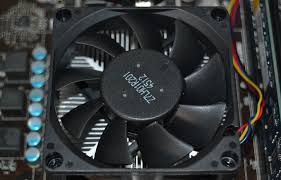
To do this, press File > Save Report from the Open Hardware Monitor menu. If you want to save a report to help you monitor your performance over time, Open Hardware Monitor will help you do so. If you’re hitting 90 degrees or more consistently, then your PC will likely become unstable, and could burn out entirely. Between 70-80 degrees would be unusual for normal usage, but could be recorded during high-intensity usage such as gaming. Typically, a good temperature range for a CPU is around 40-60 degrees Celcius under normal load. The Max column will list the maximum recorded value for that component.
#Open hardware monitor fan control update
The Value column will list current temperatures, which will update every second. For instance, if you have an external graphics card, you’ll be able to see the temperature and fan speeds for that component. Your CPU readings will be prominent, but you’ll also be able to see temperatures and readings from other sensors.
#Open hardware monitor fan control full
If that’s the case, click Yes to confirm.Īs soon as the UAC warning is accepted, you’ll be able to view a full list of your system temperatures, fan speeds, and voltage readings in the Open Hardware Monitor window. You may need to accept a User Access Control (UAC) warning to allow for administrator user access. Once you’ve unzipped the file after download, you’ll need to double-click the OpenHardwareMonitor.exe file to begin using it. The Open Hardware Monitor is packaged in a zip file. Without it, Open Hardware Monitor won’t work correctly. Before you do that, however, you’ll need to make sure that you have the. You’ll need to download the Open Hardware Monitor tool to begin. It’ll also list current power usage and fan speeds, where possible. This free app will give you a quick overview of your system temperatures, including CPU and GPU temperatures. Several paid and free options exist, but one of the best is Open Hardware Monitor. If you want to keep an eye on your system temperatures, you’ll need to use third-party software. Unfortunately, it isn’t possible to directly monitor the CPU temperature in Windows 10. Monitoring CPU Temperature with Open Hardware Monitor To help keep temperatures down, you should look to monitor CPU temperature in Windows 10-here’s how.


Unfortunately, a number of issues can cause your CPU to overheat, from a dusty fan and a lack of airflow to missing thermal paste. If you want your Windows 10 PC to run well, your CPU needs to be in full working order.


 0 kommentar(er)
0 kommentar(er)
